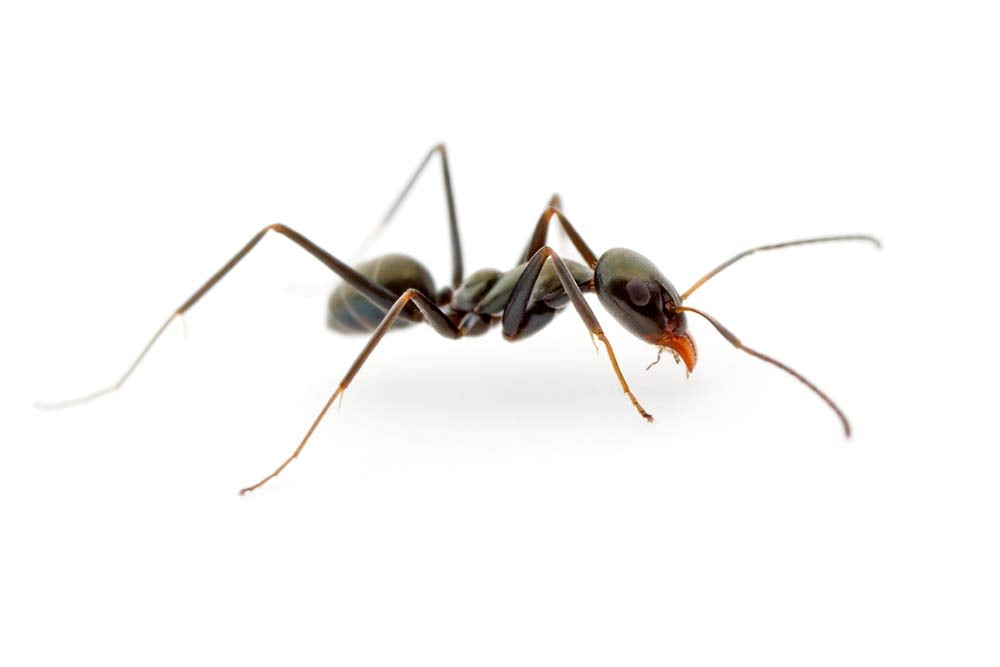Tyrant ants (Iridomyrmex spp.) in New Zealand

Pest Snapshot - Tyrant Ants
- Scientific name: Iridomyrmex spp.
- Identification: Range of colours ranging from black through to brown. Size: Up to 6.0 mm. Obvious eyes. Relatively long legged and fast moving.
- Health threat: Low
- Bite / sting pain: Does not sting, but can deliver a painful bite.
- Difficulty to control: Most tyrant ants are relatively easy to control. Closely related meat ants can be more difficult.
- Diet: Omninvore – prefers protein and honeydew
- Nest locations: Outdoors in gardens and under paved areas.
- Colony structure: Single queen, single nest
- Main pest season: Summer / Autumn
- Indoor/Outdoor pest: Outdoors
Invasive / native:
Tyrant ants are an invasive ant species in New Zealand having been introduced from Australia.
Distribution:
The yet to be identified species of Iridomyrmex is now well established in the Auckland area and can be quite dominant in garden areas.
It is also present in Northland, Coromandel, Waikato, Bay of Plenty, Hawke’s Bay and Nelson.
Typical nest location:
Iridomyrmex will nest in a wide variety of different habitats with nests are built below soil surface, with or without covering. Sometimes a mound above the soil surface will be visible. Most species will have a single nest with a single entrance, although some colonies can create super-colonies, with many inter-connected nests over hundreds of metres.
Colony size / structure:
Most tyrant ants would appear to be single queen, single nest colonies. However, with meat ants known to also multiple queens in a colony, it is possible than some tyrant ants are also polygynous (multiple queens).
Tryant ants have an alate flight, where winged reproductive mate before founding a new nest. With meat ants known to also exhibit budding behaviour (where a new queen can leave the main nest with a group of workers and brood), it is possible that some tyrant ants also start new nests through budding.
Identification:
Colour: Brown or back colouration (depending on species)
Size: 6.0 mm
Nodes on petiole: 1
Tyrant ants have obvious compound eyes in the middle of the head.
Food preferences:
Although omnivorous, tyrant ants have a preference for protein and sugar. They are often seen tending sap feeding insects.
Distinguishing features / behaviours:
- Tyrant ants are fast moving ants which aggressively defend their territories
- Some species have a symbiotic relationship with the caterpillars of imperial blue butterfly which they protect the caterpillars and pupae from predators in return for sweet secretions. They communicate through chemical secretions and sound
- Tyrant ants have a strong smell when crushed
Bite / sting:
- Tyrant ants will bite but do not sting
Prevention tips:
There are no preventative measures that can stop tryant ants nesting in an area, although treating any plants that become infested with sap feeding insects will make an area less attractive.
Our main ants page has information on more types of ant.
Treatment Notes:
As most tyrant ants are single queen, single nest species, they can be tackled using baits. Sugar or protein based baits can prove successful but as they have varied food preferences, it may be necessary to trial different bait types. As they nest outdoors and the nests are not always easy to locate, granular baits can be a good option. As tyrant ants can change their diet preferences, pest professionals may need to trial a couple of different baits to gain control.
If nests can be located, pest professionals will carry out a direct nest injection with insecticide, which can be effective and quick. Tyrant ants do occasional forage indoors, in such cases in addition to baiting, pest managers will spray the home perimeter and active trails with an insecticide.
